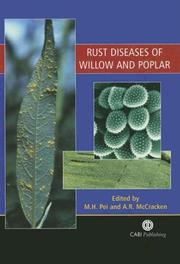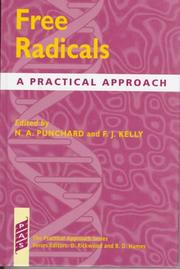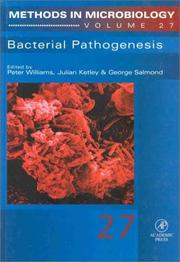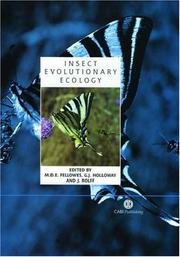| Listing 1 - 10 of 65 | << page >> |
Sort by
|
Book
ISBN: 9075894481 9789075894486 Year: 2002 Volume: 27 27 Publisher: Tervuren Musée royal de l'Afrique Centrale
Abstract | Keywords | Export | Availability | Bookmark
 Loading...
Loading...Choose an application
- Reference Manager
- EndNote
- RefWorks (Direct export to RefWorks)
Ceratitis --- Fruit --- Relation hôte parasite --- Host parasite relations --- Afrique --- Africa
Dissertation
ISBN: 9789088262166 Year: 2011 Volume: 998 Publisher: Leuven K.U.Leuven. Faculteit Bio-ingenieurswetenschappen
Abstract | Keywords | Export | Availability | Bookmark
 Loading...
Loading...Choose an application
- Reference Manager
- EndNote
- RefWorks (Direct export to RefWorks)
The burrowing nematode, Radopholus similis (Cobb, 1893) Thorne, 1949 is considered as the most damaging nematode species in commercial banana plantations. Nematicides have been intensively used to control plant-parasitic nematodes. However, many effective nematicides have been withdrawn from the market due to their adverse effects on the environment, non-target organisms and the accumulation of toxic residues in the food chain. The use of resistant cultivars is an efficient and economical alternative approach for controlling nematode populations. Unraveling the mode(s) of action or gaining in-depth knowledge on the mechanism(s) of host resistance to a nematode may provide information that can be used either to improve the efficacy of the use of the resistance or to assist in the faster selection or breeding of resistant cultivars. The main objective of our study was to characterise the mechanism(s) of resistance to R. similis in Musa spp. To achieve this objective, seven newly reported R. similis-resistant Musa genotypes were selected and their response to R. similis infection was verified under greenhouse conditions. The host responses were compared with the well-known R. similis-resistant reference cultivars Yangambi km5, Pisang Jari Buaya and the susceptible cultivar Grande Naine. The host response of these Musa genotypes to the root-knot nematode Meloidogyne incognita (Kofoid and White, 1919) Chitwood, 1949 infection was also evaluated to examine if the R. similis-resistant genotypes are also resistant to M. incognita. Four Musa genotypes Long Tavoy, Saba, Pisang Mas and Pora Pora expressed resistance to R. similis. Marau expressed a partial resistance to R. similis. The host response of Kokopo was inconclusive and Gia Hui was susceptible to R. similis. We consider the use of tissue culture-derived plants and highly pathogenic population of R. similis as the reasons for susceptibility of the previously reported R. similis-resistant genotype Gia Hui. For the first time, Vudu Papau and Pisang Mas were identified as resistant to M. incognita based on the final nematode population density. Pisang Mas is identified as a Musa genotype with combined resistance to both R. similis and M. incognita. This is the first time that a Musa genotype has been found as resistant to these two major banana root pathogens. Three R. similis resistant Musa genotypes Long Tavoy, Saba and Yangambi km5 were shortlisted for characterization of R. similis resistance in comparison with the susceptible reference cultivar Grande Naine. Our first major specific objective was to find out at which phase of the nematode-plant interactions (i.e. pre- or post-infection) the resistance to R. similis was active in the Musa genotypes. To achieve this specific objective, an autotrophic in vitro model system was developed to compare R. similis attraction, migration towards and penetration of the R. similis-resistant and susceptible Musa genotypes. A novel two-compartment system was developed to examine the attraction of R. similis to either Grande Naine or Yangambi km5 when both Musa genotypes were present.Plant root growth in the autotrophic in vitro system was good with well-developed secondary and tertiary roots. The autotrophic in vitro system was an advantageous model system to study nematode attraction towards and penetration in the roots of banana. This include good plant and root growth in the autotrophic system and ability to observe the living plant roots under microscope without compromising the easy handling, short duration and aseptic conditions of strict in vitro model systems. No significant differences were observed in the percentage of R. similis migrated towards the roots of the Grande Naine (susceptible) and Yangambi km5 (resistant) at 3, 4 and 6 h after inoculation. The percentages of females that had penetrated the roots of Yangambi km5 and Grande Naine were not significantly different from each other at 1 and 2 days after inoculation. The results of the two-compartment system showed no significant differences in the percentage of R. similis females migrated towards the roots of resistant and susceptible genotypes when they could access both roots at the same time. Hence, R. similis females showed no preference to migrate towards the roots of either the resistant or susceptible Musa genotype when a choice was given. Two greenhouse experiments were conducted on the penetration, development and reproduction of R. similis on three resistant (Long Tavoy, Saba and Yangambi km5) and one susceptible (Grande Naine) Musa genotypes. Radopholus similis penetration rate was checked at 4, 8 and 12 days after inoculation. The nematode development and reproduction were checked at 26 days after inoculation. No significant differences were observed between the numbers of nematodes that had penetrated the four Musa genotypes at 4 and 8 days after inoculation. Eggs were observed in Grande Naine but not in any of the three resistant Musa genotypes at 8 days after inoculation. Significantly lower number of eggs was observed in the roots of a resistant genotype Long Tavoy at 12 days compared to Grande Naine. The number of eggs, males, females, number of adults and juveniles and final population density were significantly higher in the susceptible genotype Grande Naine compared to the three R. similis-resistant Musa genotypes at 26 days after inoculation. The post-infectional nematode development and reproduction were severely impaired in the resistant Musa genotypes. Hence, it appears that the mechanism of resistance in the investigated Musa genotypes to R. similis is induced after nematode penetration and that preformed host resistance factors do not function strongly against the nematode attraction and migration towards the roots, and penetration of the roots. The second major specific objective of our study was to identify the phytochemicals involved in the resistance to R. similis in the resistant Musa genotypes. A preliminary phytochemical profiling was performed to assess the involvement of lignin and phenols in the resistance of the three R. similis-resistant Musa genotypes in comparison with Grande Naine. The uninfected plants of all Musa genotypes sampled at 6 weeks after inoculation showed intenselignifications in their vascular bundle compared to the plants sampled at 3 weeks after infection. This showed that the older roots are more extensively lignified in the secondary cell walls than the younger roots. Nematode infection has significantly increased the lignin content of Yangambi km5 roots at 6 weeks after inoculation. In all four Musa genotypes, lignification started at the endodermis, extended to the peripheral tissues of vascular system especially the xylem walls, xylem-accompanying parenchyma cells and eventually progress to the vascular parenchyma (sclerenchyma) cells in the centre. The cortex and aerenchyma cells were lignified to a very small extent. Extensive lignification is not associated with the cortex cells that are directly involved in the defense to R. similis. This shows that the increased lignification is only a general defense response to protect the vascular bundle to reduce damage to the plants. Hence it appears that the lignification is more associated with the plant’s tolerance to R. similis preventing damage to the plants than resistance to nematode development, reproduction and multiplication. Histochemical localisation of total phenols by staining with toluidine blue showed no preformed phenolic cells in the cortex of the R. similis-resistant and susceptible Musa genotypes. Phenolic substances were major constituents of the nematode infected necrotic cells. The Folin-Ciocalteu assay showed that the nematode infection has almost doubled the total phenols contents in all Musa genotypes at 3 weeks after infection and in the resistant genotypes at 6 weeks after inoculation. The enhanced synthesis of phenols could be due to the biosynthesis or accumulation of secondary metabolites such as phytoalexins in the nematode infection sites. In the final part of characterizing the nematode resistance in Musa genotypes, a combination of analytical techniques namely high performance liquid chromatography (HPLC), Proton nuclear magnetic resonance spectroscopy (1H NMR) and ultra performance liquid chromatography coupled with mass spectrometry (UPLC-MS) was used to identify the secondary metabolites that are induced in nematode infection sites. The secondary metabolites were localised to study their distribution using matrix-free laser desorption/ionisation mass spectrometric imaging (LDI-MSI) techniques. The HPLC and 1H NMR analysis structurally identified nine phenylphenalenone-type phytoalexins and the UPLC-MS analysis identified one additional phenylphenalenone-type phytoalexin from R. similis-infected necrotic tissues of the banana roots. Our results provided clear evidence for the induction of phenylphenalenone-type secondary metabolites in Musa spp. in response to R. similis infection. These compounds were absent in the uninfected control roots. The phenylphenalenones showed a highly localised presence only in the nematode-infected necrotic regions of the banana roots. Observation of the lesions also showed that, in Yangambi km5, the lesions are small, discontinuous and non-expanding as in hypersensitive lesions. But, in Grande Naine, the lesions were large, tunnel-like and covered larger areas of the infected roots. Anigorufone was identified as the most abundant phenylphenalenone-type secondary metabolite present in the necrotic lesions of R. similis-resistant and susceptible cultivars. But, the concentration of anigorufone per unit area was very high in Yangambi km5 compared to Grande Naine. The higher concentration of anigorufone and other phenylphenalenone-type phytoalexins localised in few cells in the R. similis-resistant cultivar can create a more toxic cellular environment to the nematode compared to Grande Naine.The anti-nematode properties of the identified phenylphenalenones were assessed by in vitro bio-assays on nematode motility inhibition and nematode mortality. Eleven out of thirteen testedphenylphenalenones were inhibitive to R. similis motility. Our results are the first evidence for the anti-nematode properties of phenylphenalenones. Anigorufone, 4-hydroxy-2-methoxy-9-phenylphenalenone and isoanigorufone were remarkably powerful anti-nematode compounds tested in our study in that they caused quiescence to more than 75% of R. similis juveniles and adults. Hydroxyanigorufone and monohydroxyanigorootin were also highly inhibitive to R. similis motility starting from 24 h of incubation and the effect was either consistent or increased over time. Anigorufone was the most powerful anti-nematode compound assayed. The motility inhibition concentration of anigorufone required to cause quiescence to 50% of the tested R. similis (IC50) was only 23 ppm at 72 h of incubation. At higher concentrations of anigorufone such as 50, 100 and 150ppm, nematodes ingested large amounts of the compound causing mortality of the nematodes. The ingested anigorufone was found accumulated in the nematode guts of all life stages of nematodes. Elaborated future bio-assaysusing different combination of the identified compounds will enhance the understanding on the synergism or antagonism of the compounds. Future studies could explore the possibilities of enhancing the cellular concentration and improved localisation of anigorufone and other phenylphenalenones in the roots of R. similis-susceptible commercially successful banana cultivars such as Grande Naine.
Germplasm --- Musa --- Radopholus similis --- Résistance aux organismes nuisibles --- Pest resistance --- Relation hôte parasite --- Host parasite relations --- Academic collection --- Theses
Book

ISBN: 9282868877 Year: 1999 Publisher: Luxembourg : Office for Official Publications of the European Communities,
Abstract | Keywords | Export | Availability | Bookmark
 Loading...
Loading...Choose an application
- Reference Manager
- EndNote
- RefWorks (Direct export to RefWorks)
Nematoda --- Entomophaga --- Lutte biologique --- Biological control --- Relation hôte parasite --- Host parasite relations --- Biogéographie --- Biogeography --- Compétition biologique --- Biological competition

ISBN: 0851999999 Year: 2005 Publisher: Wallingford CABI
Abstract | Keywords | Export | Availability | Bookmark
 Loading...
Loading...Choose an application
- Reference Manager
- EndNote
- RefWorks (Direct export to RefWorks)
Phytopathology. Phytoparasitology --- Populus --- Salix --- Agent pathogène --- Pathogens --- Épidémiologie --- Epidemiology --- Relation hôte parasite --- Host parasite relations --- Génotype --- genotypes --- Résistance aux maladies --- Disease resistance --- Melampsora --- Europe
Book
ISBN: 2930133171 9782930133171 Year: 1998 Publisher: Bruxelles Editions Memor
Abstract | Keywords | Export | Availability | Bookmark
 Loading...
Loading...Choose an application
- Reference Manager
- EndNote
- RefWorks (Direct export to RefWorks)
Insecten --- Insectes --- Populus --- Insecta --- Ravageur des plantes --- pests of plants --- Identification --- identification --- Relation hôte parasite --- Host parasite relations --- Lutte anti-insecte --- Insect control --- Europe --- Insects. Springtails --- identification.

ISBN: 0199635609 0199635595 Year: 1996 Volume: 168 Publisher: Oxford : IRL Press,
Abstract | Keywords | Export | Availability | Bookmark
 Loading...
Loading...Choose an application
- Reference Manager
- EndNote
- RefWorks (Direct export to RefWorks)
Free radicals (Chemistry) --- Antioxidants --- Analysis --- Laboratory manuals. --- Radical libre --- Free radicals --- Métabolite --- Metabolites --- Relation hôte parasite --- Host parasite relations --- Réponse de la plante --- Plant response --- Identification --- identification --- identification.
Book
ISBN: 0791406164 Year: 1990 Publisher: Albany : State University of New York Press,
Abstract | Keywords | Export | Availability | Bookmark
 Loading...
Loading...Choose an application
- Reference Manager
- EndNote
- RefWorks (Direct export to RefWorks)
Insecta --- Insecte nuisible --- Pest insects --- Selection naturelle --- Natural selection --- Relation hôte parasite --- Host parasite relations --- Comportement --- Behaviour --- Zoology and Animal Sciences. Biology of Animal Taxonomic Groups --- Invertebrata --- Invertebrata.

ISBN: 0125215258 0127544208 9786611714680 1281714682 0080860567 9780125215251 9780127544205 Year: 1998 Volume: 27 Publisher: San Diego : Academic Press,
Abstract | Keywords | Export | Availability | Bookmark
 Loading...
Loading...Choose an application
- Reference Manager
- EndNote
- RefWorks (Direct export to RefWorks)
Bacteria --- Agent pathogène --- Pathogens --- Identification --- identification --- diagnosis --- Relation hôte parasite --- Host parasite relations --- Plante --- plants --- Animal --- animals --- Expression des gènes --- gene expression --- Contrôle de maladies --- Disease control --- Bacterial diseases --- Pathogenesis --- identification.
Dissertation
ISBN: 9059890833 Year: 2005 Publisher: Gent s.n.
Abstract | Keywords | Export | Availability | Bookmark
 Loading...
Loading...Choose an application
- Reference Manager
- EndNote
- RefWorks (Direct export to RefWorks)
Aquaculture --- aquaculture --- Maladie des poissons --- Fish diseases --- Micro-organisme --- microorganisms --- Relation hôte parasite --- Host parasite relations --- Élevage protégé --- Barrier husbandry --- Artemia --- Organisme indicateur --- Indicator organisms --- Alimentation des poissons --- Fish feeding --- Bacteria --- Antagonisme --- Antagonism --- Probiotique --- probiotics --- Glucane --- Glucans --- Cytophaga --- Theses --- aquaculture.

ISBN: 9780851998121 0851998127 Year: 2005 Publisher: Wallingford : CABI Publishing,
Abstract | Keywords | Export | Availability | Bookmark
 Loading...
Loading...Choose an application
- Reference Manager
- EndNote
- RefWorks (Direct export to RefWorks)
Insects --- Evolution --- Ecology --- Insecte utile --- Useful insects --- Insecte nuisible --- Pest insects --- Comportement social --- social behaviour --- Parasitisme --- Parasitism --- Biodiversité --- Biodiversity --- Intéraction génotype environnement --- genotype environment interaction --- Relation hôte parasite --- Host parasite relations
| Listing 1 - 10 of 65 | << page >> |
Sort by
|

 Search
Search Feedback
Feedback About UniCat
About UniCat  Help
Help News
News